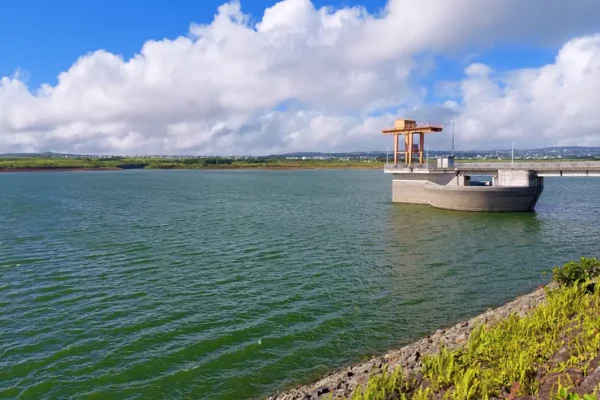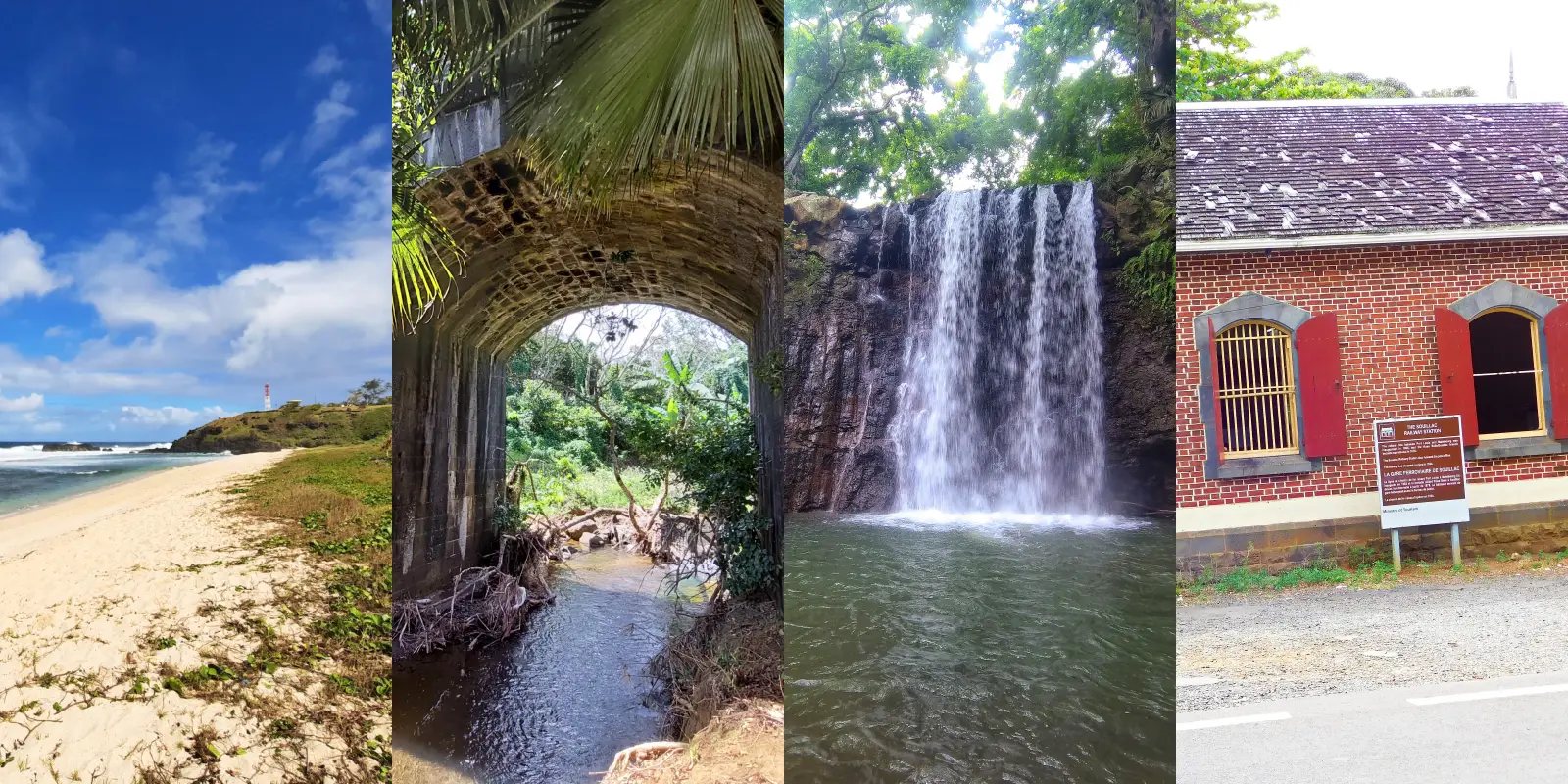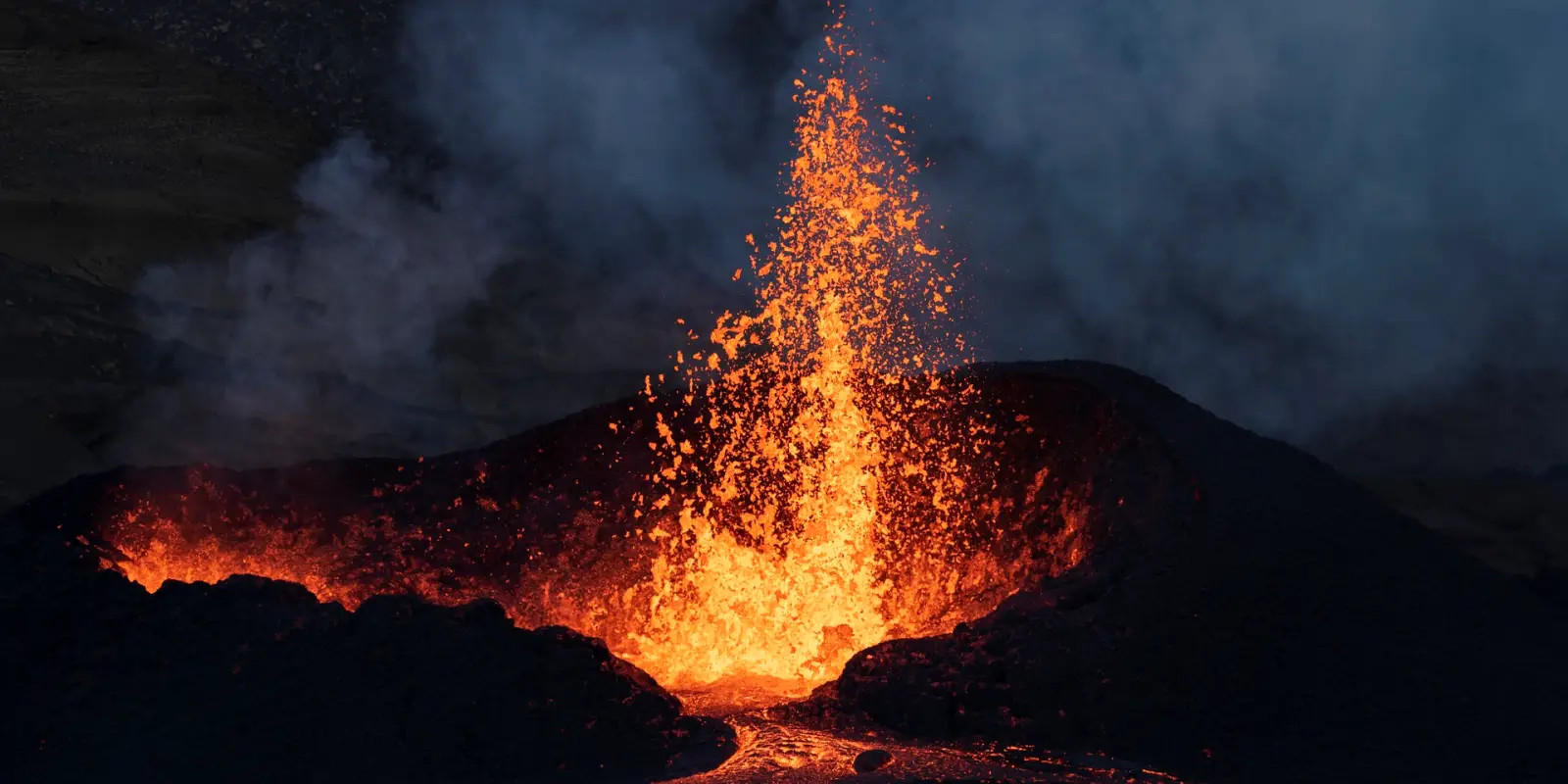Mauritius offers some lesser-known beauties that will astound you. Aside from beaches, mountains, and nature trails, waterfalls are among the most popular places to visit when exploring the island. Cascade Madam Bel is one of the hidden waterfalls out there, and we are about uncovering it, as well as the dark history behind it. This post originates from my research interests, which I began in 2021. It is essentially my thesis on this place. This location has been labeled as haunted, and slaves passed away there numerous years ago. Is it true or false? I will reveal everything further below based on my investigation.
Cascade 400 or Cascade Jumeau
Cascade Madam Bel, also known as Cascade 400 and Cascade Jumeau by locals, is located between the picturesque village of Bel Ombre and Chamarel. It became a forgotten place with time. However, slaves from Bel Ombre and Chamarel frequented this location at the end of the 18th and mid-19th centuries. Cascade Madam Bel is located not far from Cascade des Galets, also known as Cascade de 500 Pieds.
The waterfall is divided into two sections, resulting in a breathtaking height of around 400m. When viewed from the bottom, it is clearly one of Mauritius’ tallest waterfalls, trailing after Chamarel Falls, Cascade de 500 Pieds, and Victoria. I should point out that the authority has not documented Cascade Madam Bel’s height. We just have an estimation of the height. There are two ways to get there, the most popular being from Plaine Champagne Trail to the direction of Watook Trail. In 2021, I explored the waterfall with a great friend, Shenaz. We chose a different trail which was significantly easier, and it took us approximately 45 minutes to reach the waterfall at the bottom.
I should mention that the waterfall is not on private property. Rather, we have been told it is on state land. The trail leading from Plaine Champagne to Watook Trail is fairly technical. I would recommend having a skilled guide with you. Some rocks can fall from boulders. If you started at the top of the waterfall, to get to the second level, you must descend a steep route, then walk by the side of it and descend to the bottom. The ambiance is serene and peaceful, especially with the waterfall noises.
Why It Is Called “Madam Bel”?
In 2008, the University of Mauritius conducted an inventory of slave sites in Mauritius, Rodrigues, and Agaléga Islands, which was also a part of the UNESCO Slave Route Project. The documentation states that the location was well-known for housing a slave owner named Madam Bel and her slaves. Furthermore, this location was well-known as a shelter for maroon slaves. Bel Ombre, Chamarel, and the Black River Gorges on the opposite side were densely forested, making it simple for slaves to hide from their masters after fleeing. Furthermore, according to the work, there is no exact account of Madam Bel based on multiple oral histories. Some claimed she extracted oil from her slaves’ skins, while others believed she had an affair with her slaves or simply formed a settlement with them. Neither of these variations are correct. And this made me wonder who that mythical figure, “Madam Bel” was!
I started my investigation by looking at historic maps of Mauritius. Only on the Descubes Map of 1880, shows the territory where the waterfall is located by a concessionaire named Sturbel. Descubes Map was published in 1880, but it did document previous concessionaires. Is the name “Bel” originated from Sturbel? I completely believe so.
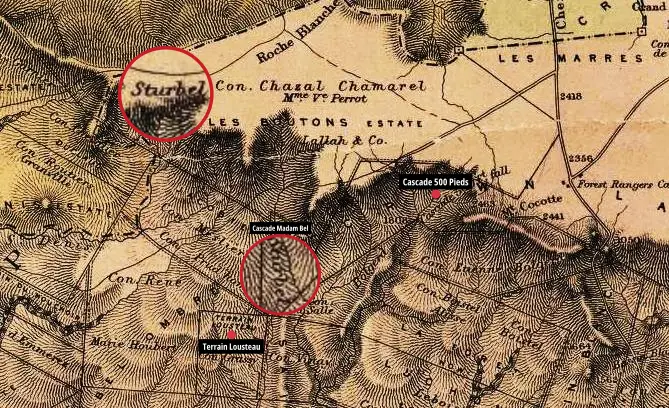
Before we get started on the map, let’s talk about how the Sturbel family came to Mauritius. After conducting extensive research on genealogical documents, I was brought to the 18th century. Apparently, the first Sturbel family arrived from Belgium in the 1790s. The name was Jean Baptiste Sturbel. He then married Marie Françoise Charlotte Lousteau in 1793 at the Cathedral of Port-Louis. They had three daughters: Jeanne Benoîte Joséphine Sturbel (1795-1861), Virginie Lousteau Sturbel (1796-1798), and Marie Françoise Sturbel (1798-1885), and one son, Jean Chéri Sturbel (1795-1830). The name Sturbel was frequently misspelled as Strubel on various records, despite the fact that they are from the same family. Keep in mind that their last daughter shared the same name as the mother, which is critical to distinguish to avoid confusion.
On the map above, they had lands in the Chamarel and Bel Ombre regions. The Cascade Madam Bel was located on the Sturbel property, near to Veuve Pierrot. And, as it appears, the first Sturbel woman was Marie Françoise, a member of the Lousteau family; on the map, Lousteau is also listed as a concessionaire close to the Sturbel. Cascade 500 Pieds may be seen a little further to the right, where Bolgerd was the concessionaire.
Cruelty Against Her Slaves, Fact Or Fiction?
According to hearsay, Madam Bel used to extract oil from her slaves’ skins to manufacture candles. However, this is absolutely false. There are no such reports to support this notion as fact. However, the Anti-Slavery Monthly Reporter, published in 1831, includes several reports of a lady named Sturbel who assaulted her slaves. Adeline, one of her slaves, was 23 years old and worked on Lady Sturbel’s estate alongside her two daughters. Their responsibilities included producing bags for sugar and coffee. Both she and her children were thrashed with a cane for failing to complete their jobs properly. Another slave, 14-year-old Pierre Louis, was subjected to similar mistreatment. Other slaves, including Celestine and Julia, reported Lady Sturbel’s mistreatment. It has been reported that several of her slaves committed suicide as a result of her cruel actions. One of them, Lolo, drowned herself and her two children in the estate pond. Nonetheless, Sturbel contested the charges but paid £33 plus additional expenses.

After studying who was the real Sturbel who perpetrated those atrocities using those slave identities at the time, from slave database of Nelson Mandela Centre For African Culture, and from the Former British Colonial Dependencies, Slave Registers, 1813-1834, I came up with the name, Fanny Lousteau Sturbel. She was another slave master, related to the aforementioned Marie Françoise Sturbel, but did not own the area where the waterfall is located. Fanny Lousteau Sturbel owned an estate near Riambel. There was also a sugar mill near her land owned by the Lousteau family, named Bel Air Hardouin. The chimney still stands today. We can deduce that it was another Sturbel from the owner of the land where the waterfall is located.
Who Was The Real Madam Bel, The Mother Or The Daughter?
To be honest, I have no idea the precise answer because my investigation yielded no concrete results. However, I strongly believe, Madam Bel was Marie Françoise Sturbel, née Lousteau, the mother. According to genealogy sources, she died in 1845 in Mauritius and was buried at the Pamplemousses Cemetery. I have been informed that her tomb has also been lost. It is possible that she possessed the land where the waterfall is located, as mentioned in the Decisions Of The Supreme Court Vice Admiralty Court & Bankruptcy Court Of Mauritius, 1876, in a land dispute case involving Sturbel, Chazal, Pierrot, and others. According to the record, 156 acres of property were originally owned by Mrs Marie Françoise Sturbel, Jean Baptiste Sturbel’s divorced wife in 1818, and were later handed to her daughter, Marie Françoise Sturbel, who married Pierre Gustave Colomb D’Ecotay. Remember, as I previously stated, the mother and daughter shared the same name. It was a regular practice throughout those times.
It went on to say that the land was limited on three sides by Prud’Homme and Mesliers’ properties to the right. On Descubes Map, you can see that it was discussing the same Sturbel land as the concessionaire, which is where the waterfall is.
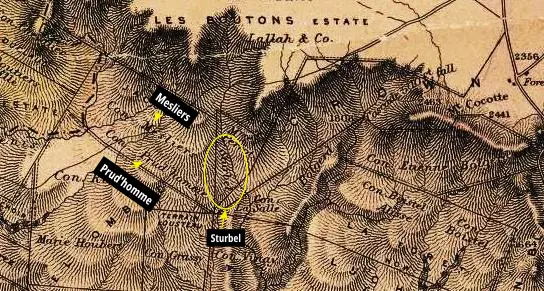
It could not be her daughter, who was Madam Bel, because she relocated to France, specifically Vincelles, Jura, Franche-Comté, and died there in 1885. According to the report, the land was sold to various people beginning in 1822. The future owners included Isidore Lousteau (1822), Fayot (1825), Barry (1863), and others, until the Mauritius government took it. Since 1822, the waterfall’s name has remained “Bel” from the Sturbel, although several proprietors have changed. From this perspective, I am convinced that the true Madam Bel was Marie Françoise Sturbel, born Lousteau, the mother.
Conclusion
It took me a while to put together this article after conducting extensive study on this individual named Sturbel. The location piqued my interest, and I wanted to learn why the waterfall got the name Madam Bel. I have my own opinions on the subject, and am not pushing anyone to believe my thesis. To summarize, the name Madam Bel was actually Marie Françoise Sturbel, born Lousteau. I have discovered no evidence to corroborate the rumors that she extracted oil from her slaves or had affairs with them. However, there are documented records of another Sturbel, Lady Fanny Lousteau Sturbel, who committed cruelties against her slaves and received a fine. Unfortunately, the tomb of Marie Françoise Sturbel, who died in 1845 and was buried at the Pamplemousses Cemetery, has not been discovered.
This post may be updated later if additional findings are made. If you have any further information about Madam Bel or Sturbel, please contact me or add me on Facebook.
Author & References

Author: Ali J | Date Published: November 20, 2024 | Last Updated: NA
References: Inventory of slave sites in Mauritius, Rodrigues, and Agaléga Islands, (University of Mauritius), Anti-Slavery Monthly Reporter (1831), Descubes Map (1880), Decisions Of The Supreme Court Vice Admiralty Court & Bankruptcy Court Of Mauritius (1876), Nelson Mandela Centre For African Culture, Former British Colonial Dependencies, Slave Registers, 1813-1834, ancestry.co.uk, genealogie.mu.
Subscribe For Newsletters
Not just newsletters, but you may enjoy free vouchers, coupons, activity deals and many others while subscribing…



